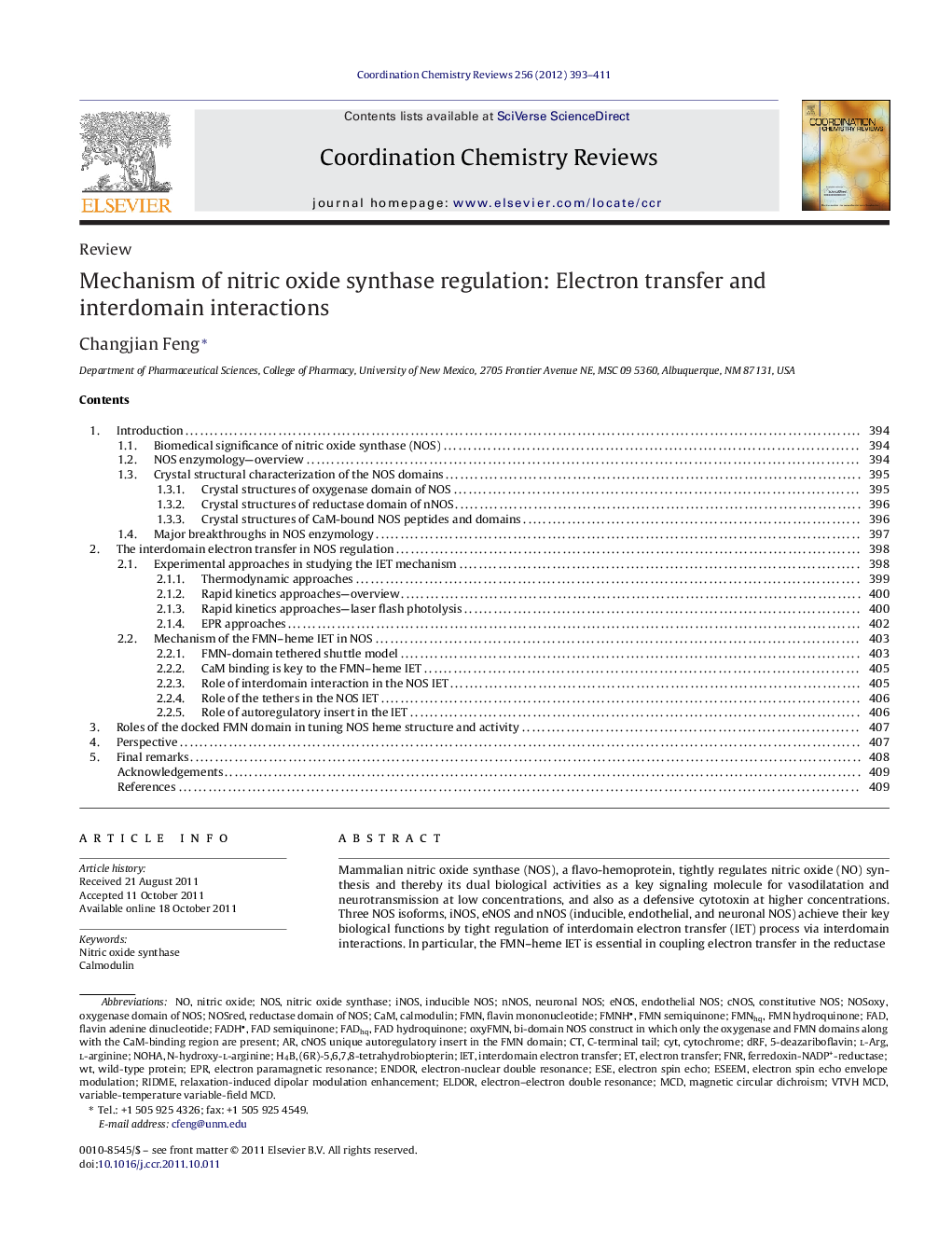| کد مقاله | کد نشریه | سال انتشار | مقاله انگلیسی | نسخه تمام متن |
|---|---|---|---|---|
| 1301094 | 1498774 | 2012 | 19 صفحه PDF | دانلود رایگان |

Mammalian nitric oxide synthase (NOS), a flavo-hemoprotein, tightly regulates nitric oxide (NO) synthesis and thereby its dual biological activities as a key signaling molecule for vasodilatation and neurotransmission at low concentrations, and also as a defensive cytotoxin at higher concentrations. Three NOS isoforms, iNOS, eNOS and nNOS (inducible, endothelial, and neuronal NOS) achieve their key biological functions by tight regulation of interdomain electron transfer (IET) process via interdomain interactions. In particular, the FMN–heme IET is essential in coupling electron transfer in the reductase domain with NO synthesis in the heme domain by delivery of electrons required for O2 activation at the catalytic heme site. Compelling evidence indicates that calmodulin (CaM) activates NO synthesis in eNOS and nNOS through a conformational change of the domain from its shielded electron-accepting (input) state to a new electron-donating (output) state, and that CaM is also required for proper alignment of the domains in all the three NOS isoforms. Another exciting recent development in NOS enzymology is the discovery of importance of the FMN domain motions in modulating reactivity and structure of the catalytic heme active site (in addition to the primary role of controlling the IET processes). In the absence of a structure of full-length NOS, an integrated approach of spectroscopic (e.g. pulsed EPR, MCD, resonance Raman), rapid kinetics (laser flash photolysis and stopped flow) and mutagenesis methods is critical to unravel the molecular details of the interdomain FMN/heme interactions. This is to investigate the roles of dynamic conformational changes of the FMN domain and the docking between the primary functional FMN and heme domains in regulating NOS activity. The recent developments in understanding of mechanisms of the NOS regulation that are driven by the combined approach are the focuses of this review. An improved understanding of the role of interdomain FMN/heme interaction and CaM binding may serve as the basis for the design of new selective inhibitors of NOS isoforms.
► Mammalian NOS enzyme is a homodimeric flavo-hemoprotein, and its catalysis is tightly regulated.
► A key question is how interdomain electron transfer is coupled to NO production.
► Absence of a full-length NOS structure justifies a combined spectroscopic and kinetics approach.
► Applications of laser flash photolysis and pulsed EPR to study of NOS FMN–heme complex are reviewed.
► Current understanding of mechanism of electron transfer and interdomain interaction in NOS regulation is discussed.
Journal: Coordination Chemistry Reviews - Volume 256, Issues 3–4, February 2012, Pages 393–411